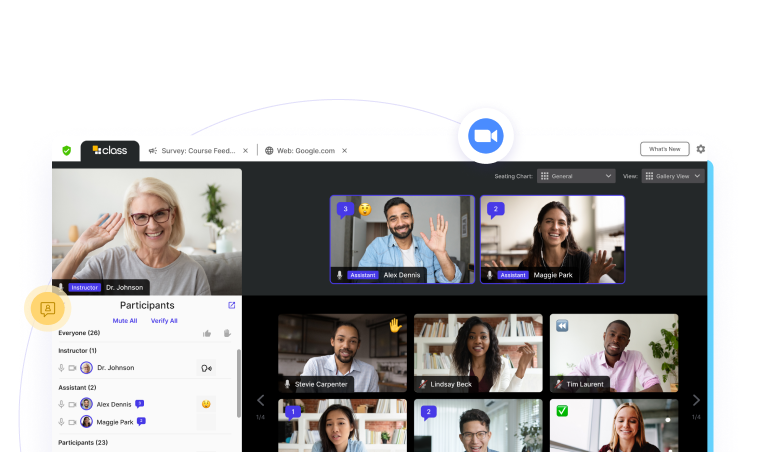
Mike Lovell is the SVP of Marketing at Class. He has dedicated his career to technology and the applications that can innovate the way people live and learn.

Mike Lovell is the SVP of Marketing at Class. He has dedicated his career to technology and the applications that can innovate the way people live and learn.

With the rise of hybrid learning in higher education, many college classrooms comprise an increasing number of diverse students. Beyond their backgrounds and experiences, these students represent a new kind of diversity between spaces. “Spatial diversity” includes those students who work together in physical classrooms and those who connect remotely.
To achieve a more inclusive student body, university administrators should think creatively about supporting a spatially diverse campus that equally provides for students and services in-person and online.
The pandemic highlighted the digital divide in America, with 17 percent of college students in 2020 reporting technology barriers to online learning. To combat this, institutions, governments, and corporations are working hard to address these issues with loaner laptops, free hotspots, and increased broadband access. The digital divide is raising the expectation for what technology is available and what’s not. This question comes alongside a modern techno-educational landscape that keenly asks if technology used for learning is becoming a larger social good.
But it’s not enough just to get students online—they must be supported just as thoroughly as “traditional,” on-campus students. Not doing so risks fragmenting the student body into spatially-distinct enclaves and identities, which may not achieve the cohesive community, belonging, and functional learning that college campuses need. To support all students and make your campus more culturally inclusive, try 1) understanding students’ unique needs and 2) creatively considering how to assist them.
A sense of belonging at a higher learning institution is a great determiner of student success:
“Connectedness is defined as the perception of belonging … [and is] achieved when an individual experiences a sense of social relationship and integration,” researchers say. “Feeling connected increases the likelihood of student health and wellbeing, academic success, and graduate prospects.”
Creating a culture of inclusion and care means asking students what they need to achieve their personal and professional version of success–and then considering how your campus and student body support that. Whether through emailed surveys, open discussion boards, or meetings with advisors and mentors, amplify and encourage dialogue. Ask your on-campus and online students about their concerns and barriers to connectedness on campus–and then recognize potential differences.
Once you understand their visions of success, your institution can utilize or mobilize resources in the right areas in innovative ways. Here are just a few ways in which you can help orient your online and hybrid students towards ‘connectedness’ with a little extra support:
Bridge spatial gaps at your campus. Consider more insights and strategies to effectively support in-person and remote learners together–to build a student body community for all. To learn more, download Class’s eBook, “Creating a Culture of Inclusion in Remote and Hybrid Learning Environments,” today.

Mike Lovell is the SVP of Marketing at Class. He has dedicated his career to technology and the applications that can innovate the way people live and learn.

Mike Lovell is the SVP of Marketing at Class. He has dedicated his career to technology and the applications that can innovate the way people live and learn.
Get our insights, tips, and best practices delivered to your inbox

Sign up for a product demo today to learn how Class’s virtual classroom powers digital transformation at your organization.

Features
Products
Integrations